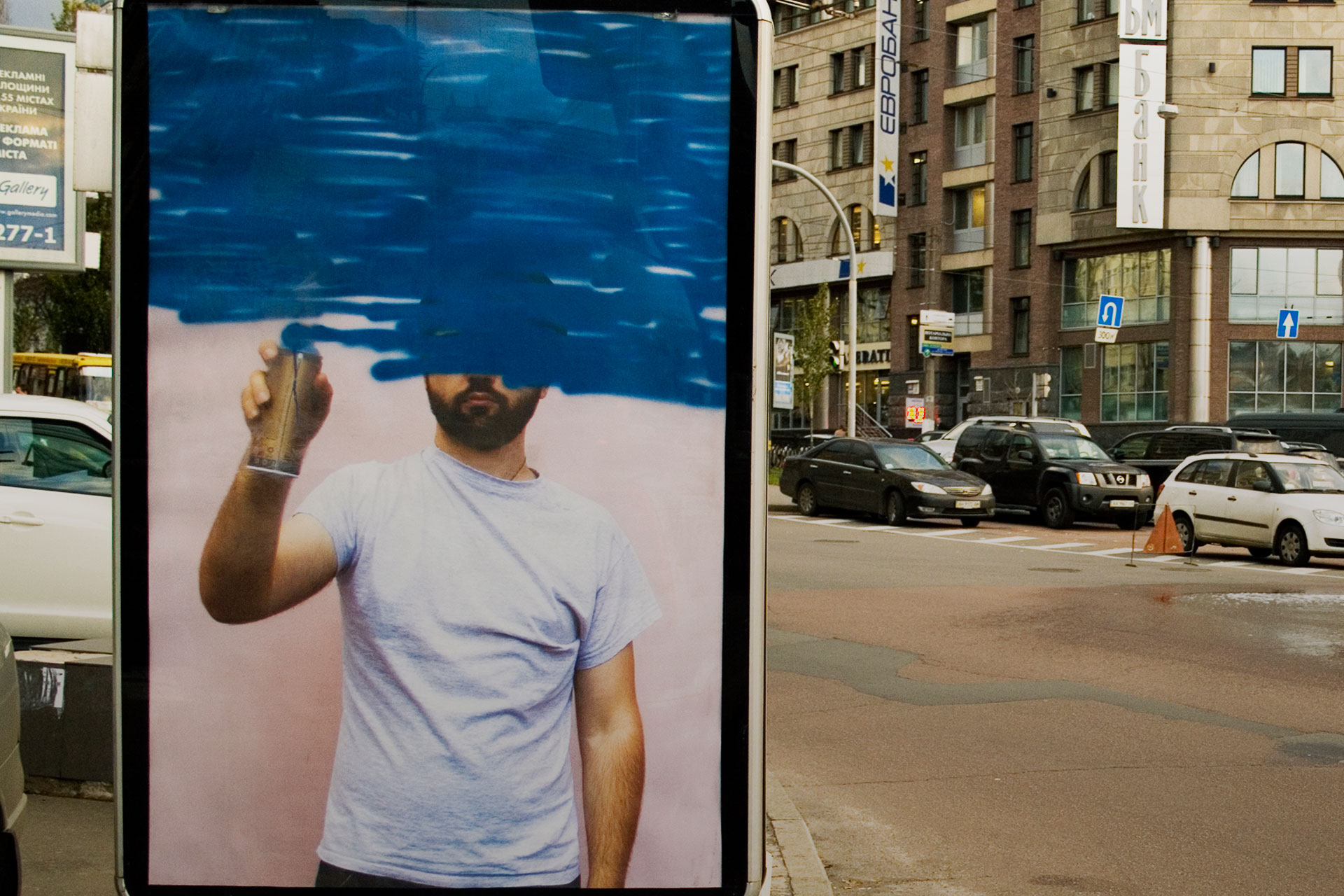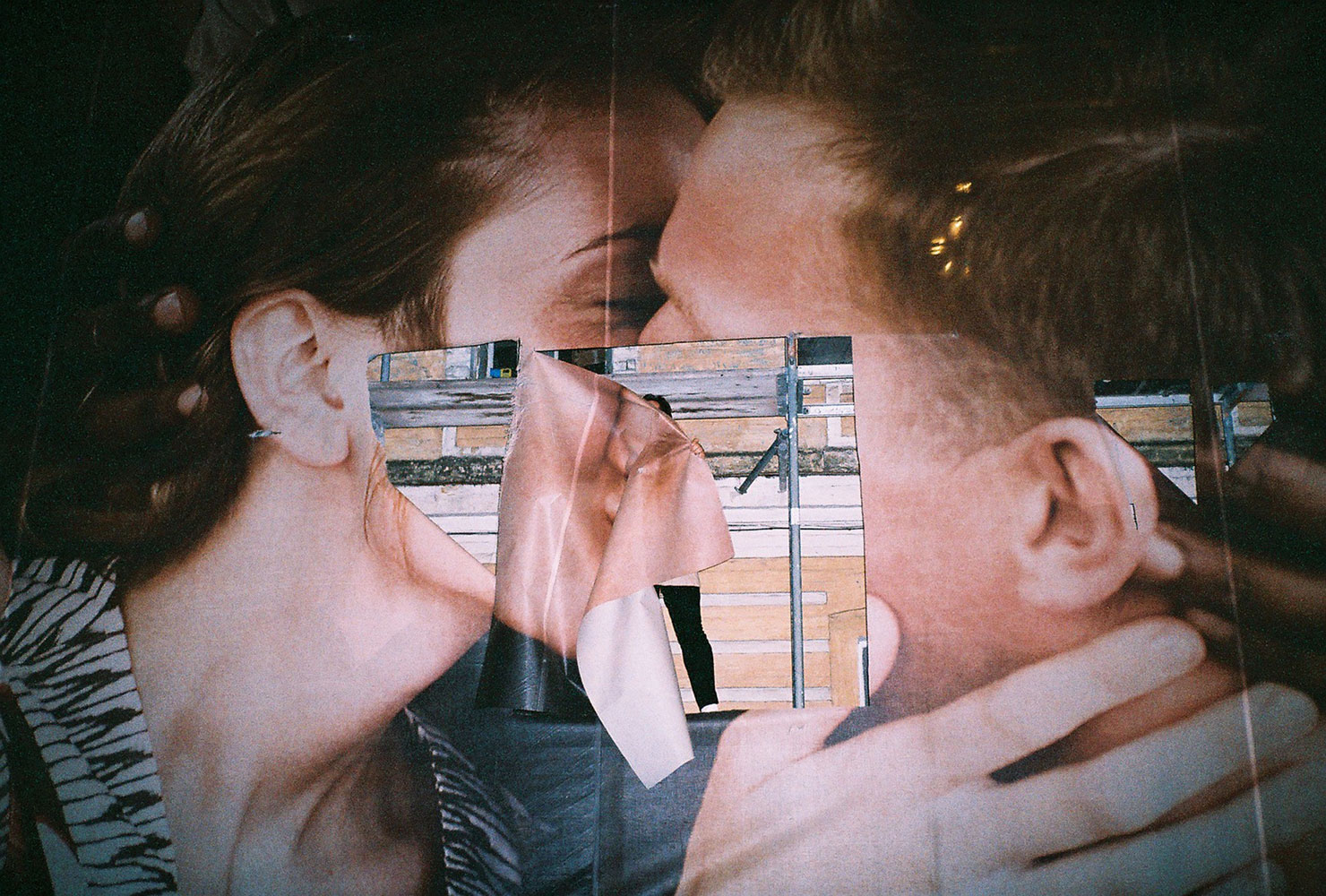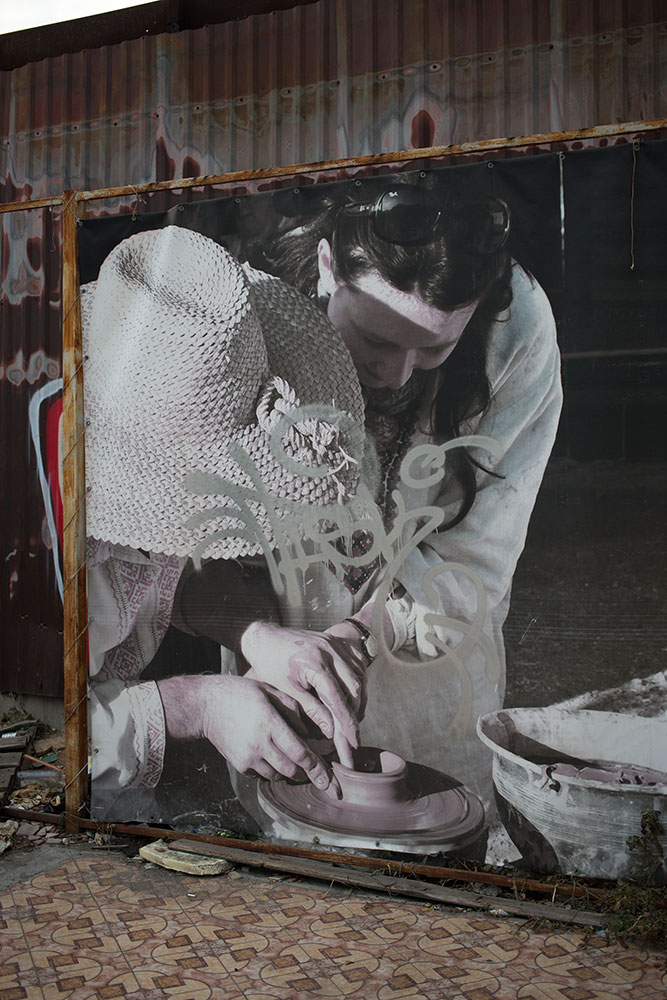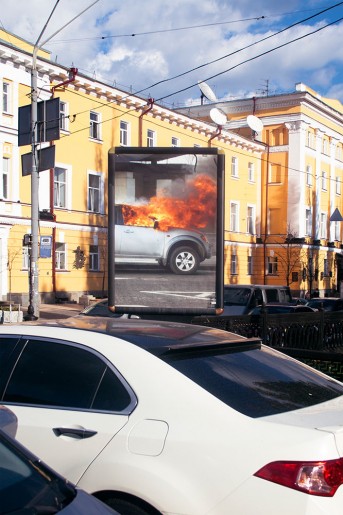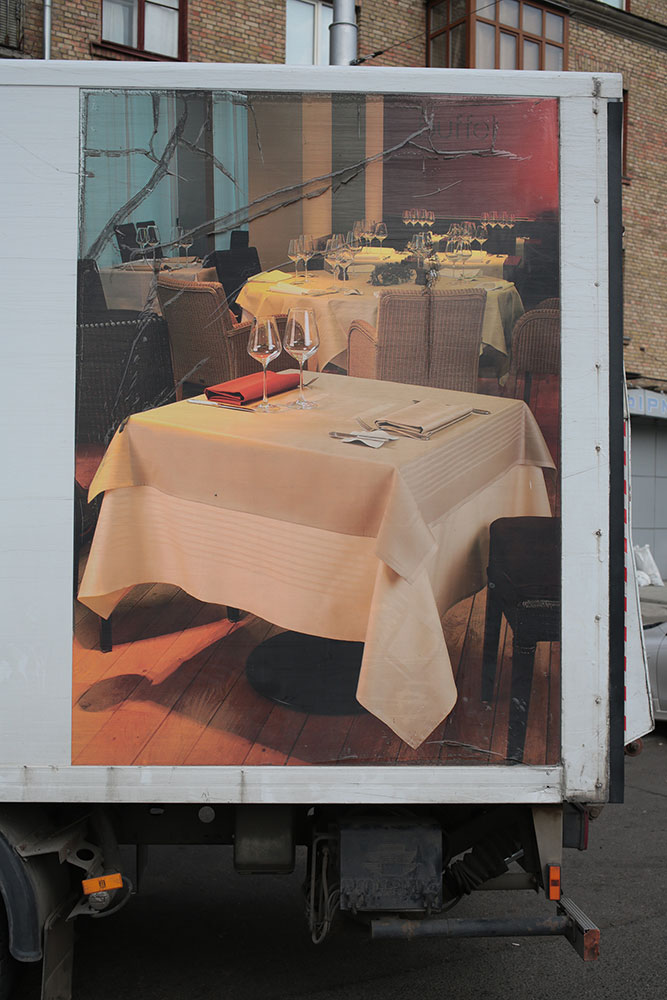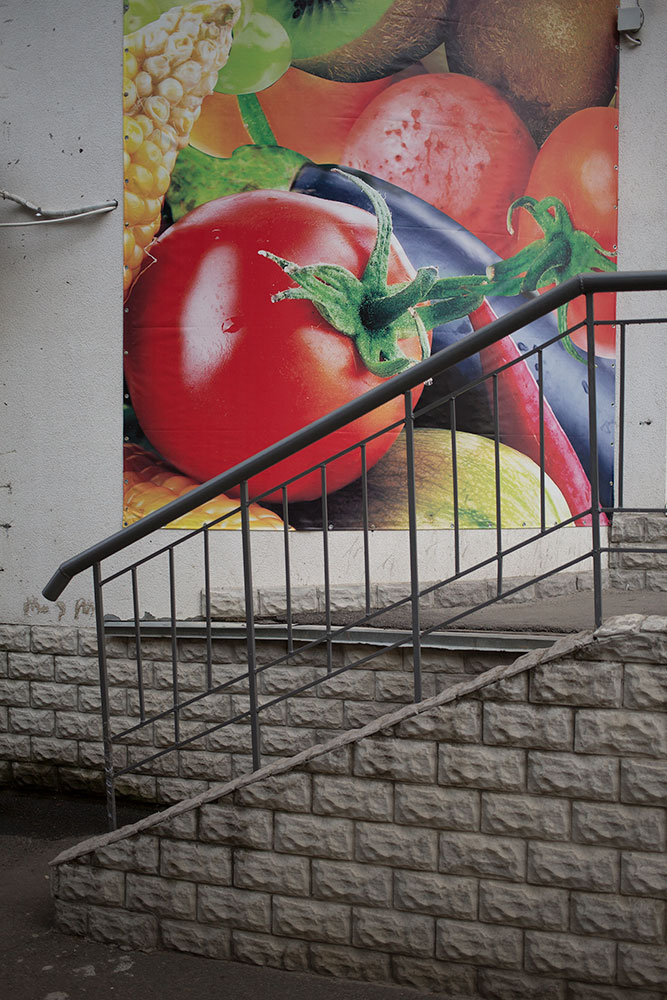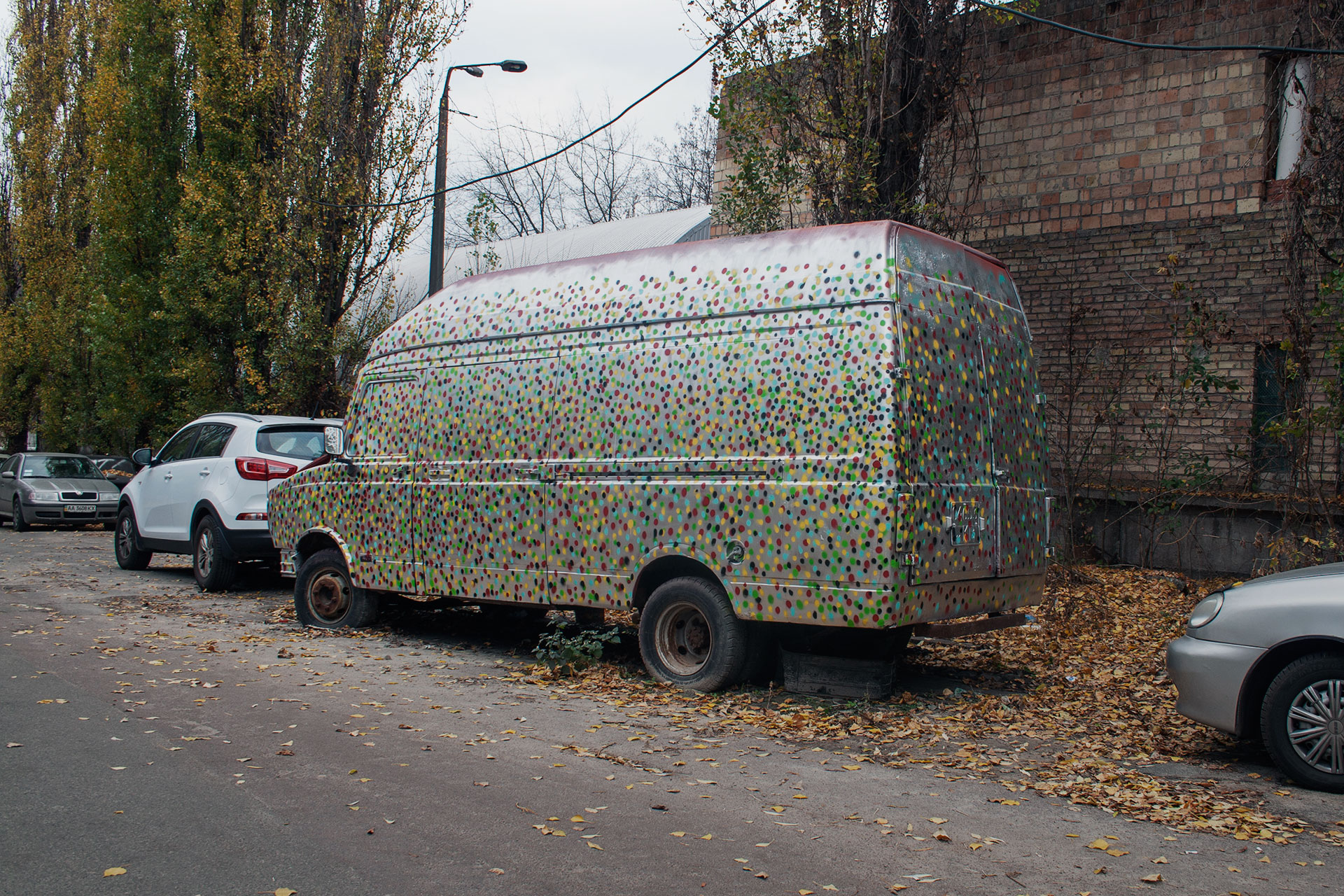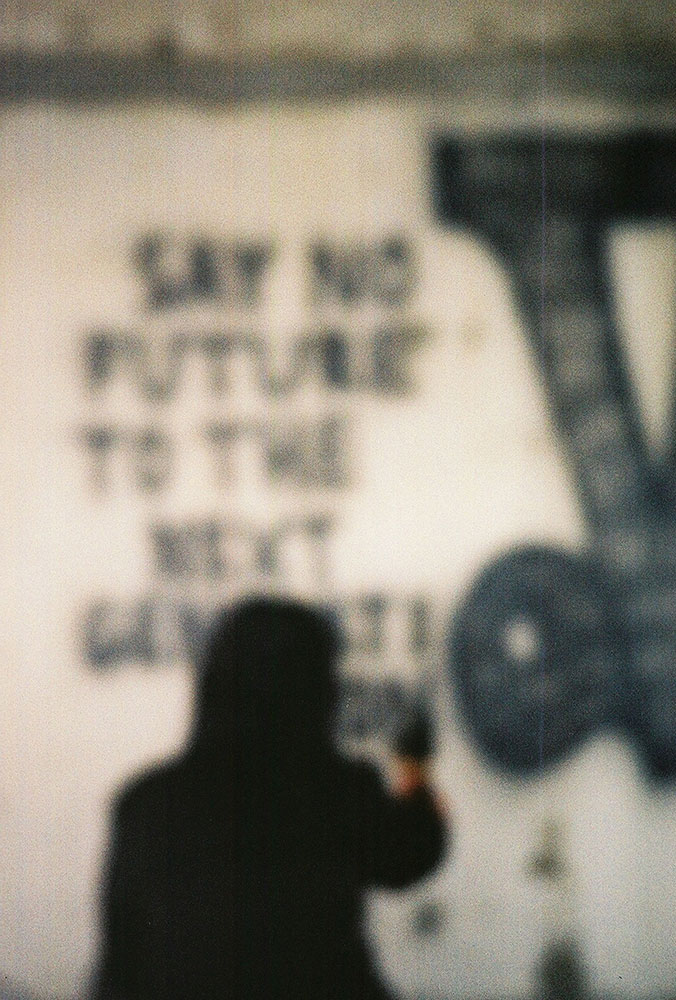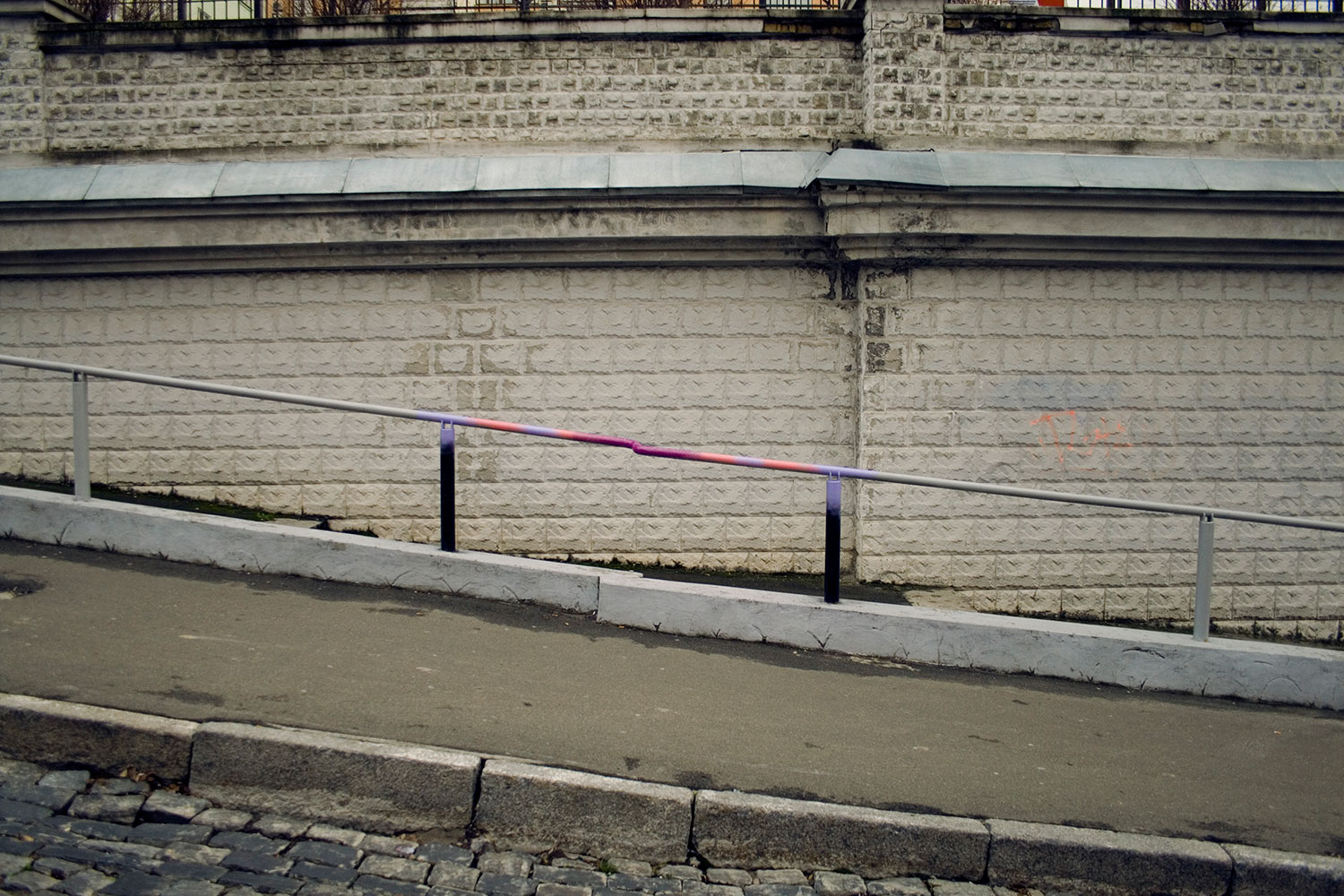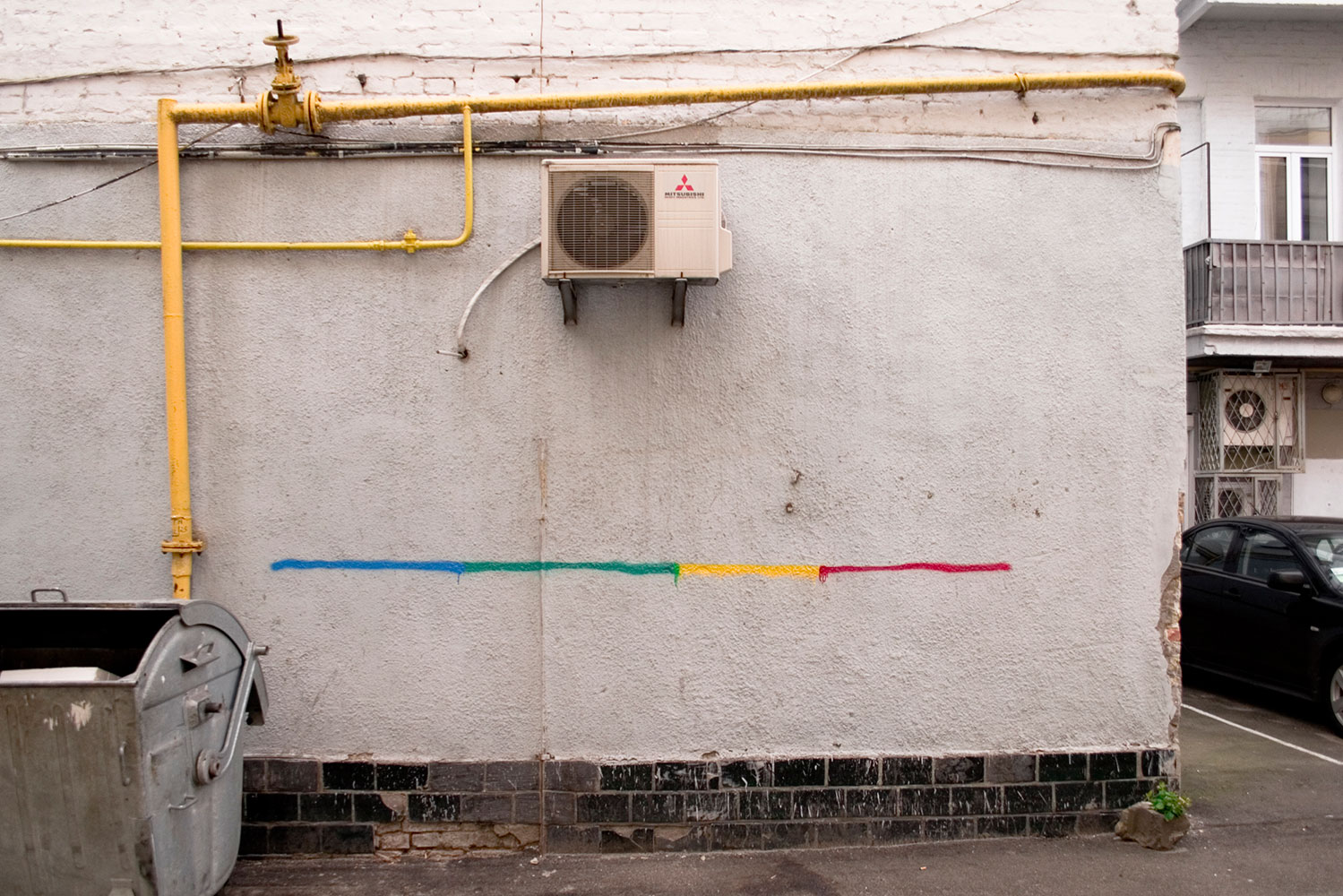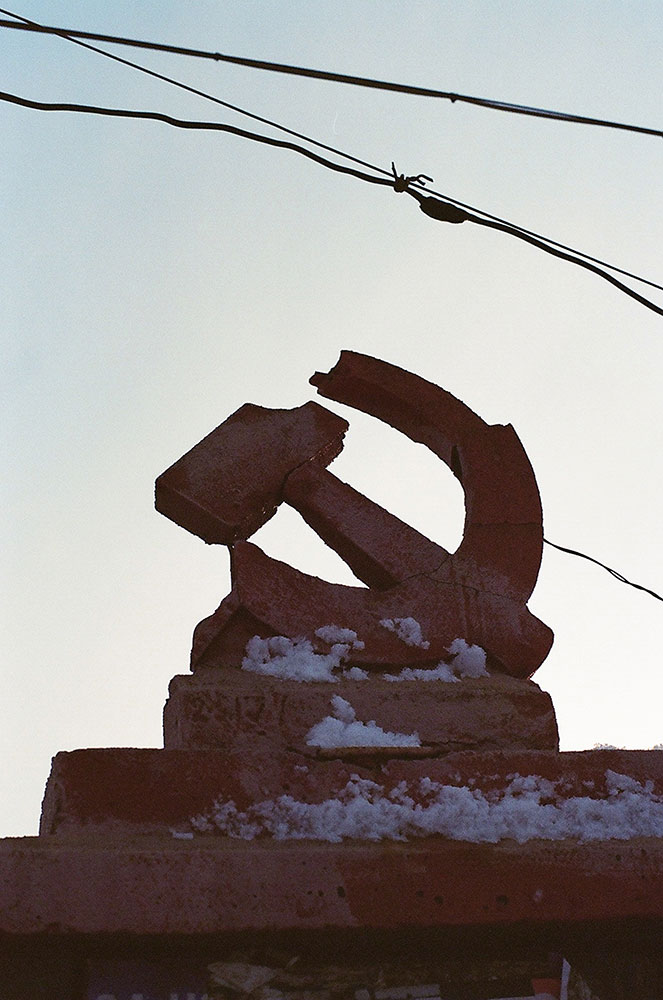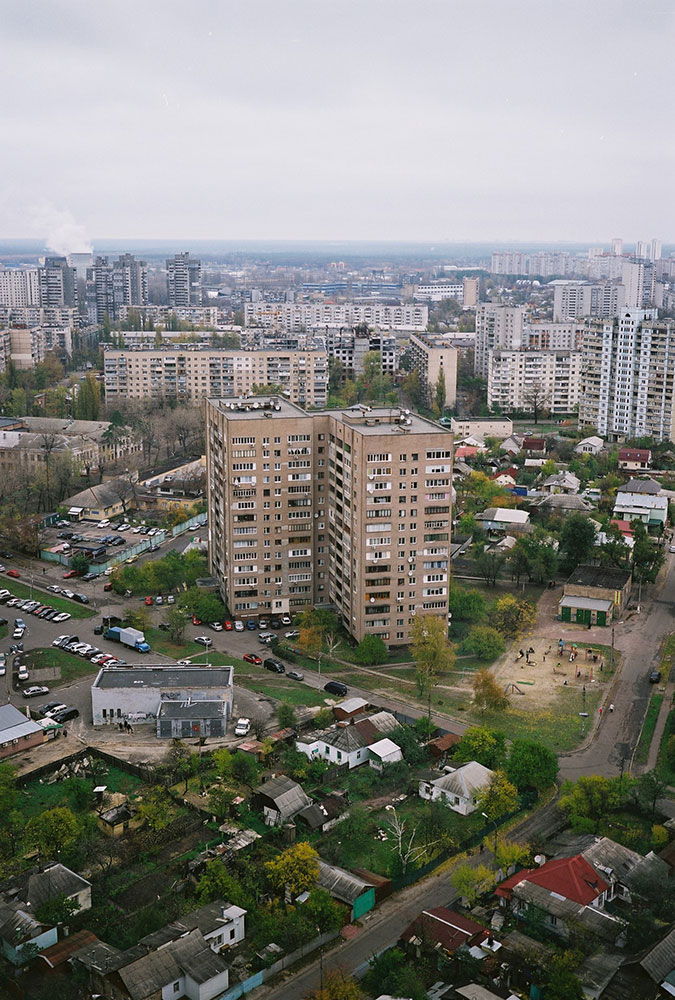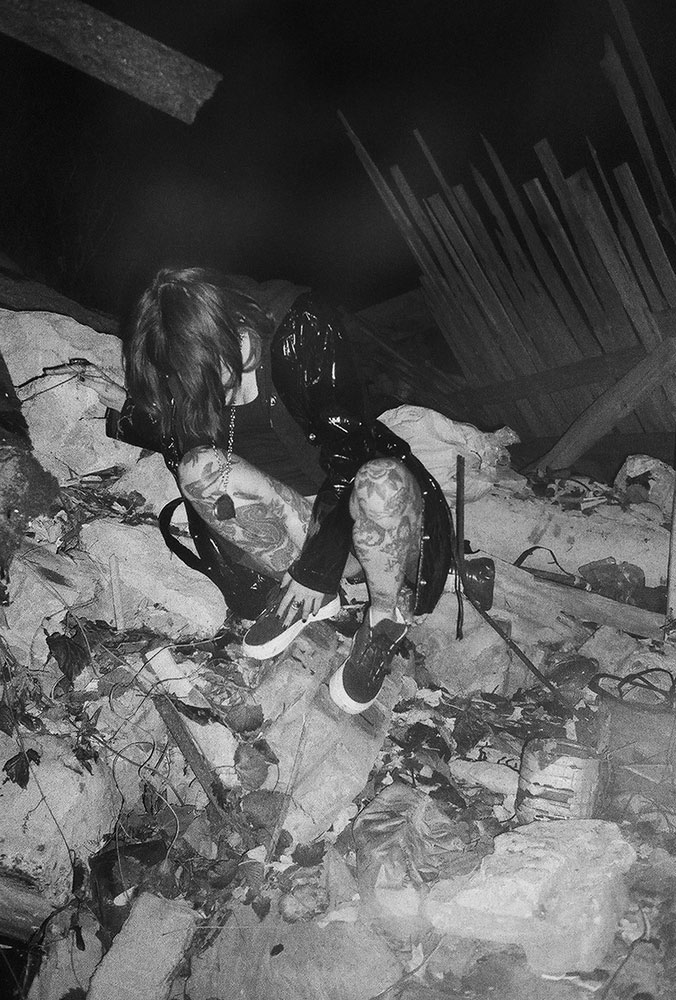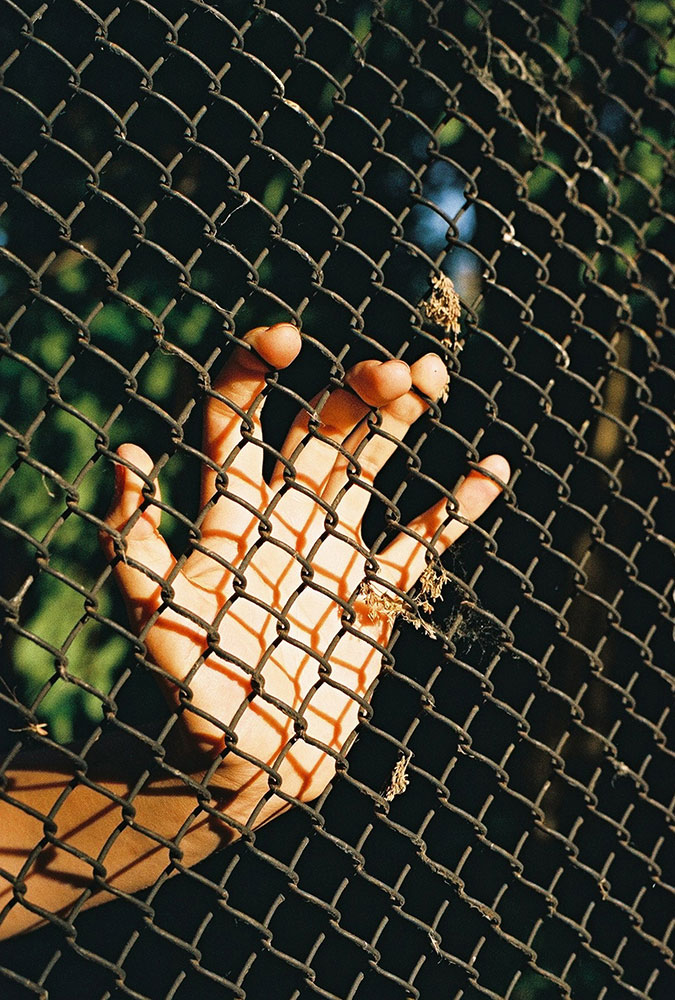Sasha Kurmaz: an artist’s guide to reclaiming public space
Kiev Now: Part TwoFor Ukrainian artist Sasha Kurmaz, the future of photography lies beyond the pages of a book and the computer screen — it belongs in the heart of the city, on the battlefield of commerce, politics and indifference. 29-year-old Kurmaz was born and raised in Kiev and picked up his camera at the same time as his spray can. A devoted graffiti artist, he started taking photographs from a desire to document the traces he was leaving around the city, and soon the camera became his tool of choice. Kurmaz began his photographic career capturing — somewhat explicitly — parties, passions, bodies and past times of his peers in the Ukrainian capital, but his interest in pervading the mundanity of city life soon took over. In his series Intervention he uses the photographic image to provoke a reaction from people drifting through the public space: replacing advertising with his own anti-consumerist artworks, putting his photographs into books or simply handing them out. His overall message couldn’t be clearer — artists in contemporary Ukraine (or anywhere in the world) can’t shy away from the social and political, and should do whatever it takes to push people out of their comfort zones.
We talked to Sasha Kurmaz about graffiti, exploring the boundaries of photography and the particularities of Kiev’s urban environment.
I know that the first artistic activity for you was graffiti. How did you discover it?
I got into graffiti at the beginning of the 2000s, and found it a very immersive hobby. I was a true graffiti fanatic, like a lot of my friends at the time, and wasn’t interested in anything except tagging. The graffiti movement was only just emerging in Ukraine, with around 20 people in Kiev, and 50 in the whole country. After a while I got tired of it and started looking for something else. I always had a camera to hand, to photograph the tags and drawings which may not last until tomorrow. Some works, of course, remain in the city for a while and others, particularly on transport, get covered up pretty quickly. I guess this is how I got into photography.
My goal is to establish a personal connection rather than cause a media storm
Still, you’ve kept some of the graffiti tools and techniques in your artistic practice.
I had a break when I was just taking photos but I eventually returned to spray painting — not tagging, when it’s just your name or the title of your graffiti collective but more abstract drawings. I started working with photography through my project Vain Youth (2010); it represents really well what I was doing in the beginning. At the time, posting images online or making zines wasn’t enough. Graffiti gave me a really valid experience of working with public space and the city, and I wanted to apply this experience to my photography. I like mixing photography and public intervention.
Could you tell us bit more about the Intervention series and its overall concept?
There are traditional means of presenting photography: books, galleries and the internet. It exists comfortably within this environment but I am interested in finding new ways to present it. I am interested in how the audience reacts to a photograph when they are confronted with it unexpectedly. In 2012 I inserted my photographs into random books sold at bookshops: I was interested in what happens to someone when they buy a book, open it and find an explicit photo. It’s a kind of game that evokes many questions: What is it? Is it a provocation? Is it meant to be like this? My main goal was to create a moment of communication with the viewer where photography is the starting point for discussion.
Which work of yours attracted the most attention on the street?
People in Kiev and Ukraine are very passive and hard to stir. Recently, I gave my photos out at a metro. Lots of people were taking them as a reflex, but there were some who started asking what it was and why I was doing it. I tried to explain. My goal is to establish a personal connection rather than cause a media storm.
You grew up in Kiev. What has changed most in the urban environment in the course of your life here?
There’s a lot more cars and advertising. Everything is covered with banners — it’s just hell. There are more kiosks and illegal trading spots, more rubbish and aggressive behaviour. It’s connected to Kiev being the capital where people come to earn money.
What about the architecture?
Lots of significant buildings were destroyed over time and replaced by malls. For example, there was a Soviet fountain which no longer worked: one day it was boarded off, then some time later there was a new mall in its place. The Church also claims a lot of public space. Kiev is like a cake, everyone wants a piece.
I like working with existing photography, not creating new images — the world is already oversaturated
You’ve used advertising a lot in your work, why?
I try to reclaim the space used by advertising, sometimes by clearing it, or using it to spread another message than a commercial one. The environment we exist in is oversaturated with images. I started capturing how people use photography as material for decorating space. Kiosks, windows, plastic bags are all covered with photos, used as a practical material. Everywhere you look, you see photography. I make books from ad cut-outs. I like working with existing photography, not creating new images — the world is already oversaturated.
Interview: Anastasiia Fedorova
Image: Sasha Kurmaz
Date: December 2015
